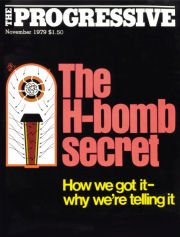 After graduating from high school in 1960, we scattered to the winds – at least I did. It would be decades before I caught up with the people from those days and heard the stories of how those friends from my earlier life negotiated the tumultuous years that followed. Howard and I reconnected 40 years later on an email thread someone started in the lead-in to a class reunion. A classmate started sending around those hyper-patriotic emails with animated flags that followed 911. The invasion of Iraq was in the air. Howard and I were among the few who opposed it, hardly the majority opinion, and in the next few years, we reconnected in person.
After graduating from high school in 1960, we scattered to the winds – at least I did. It would be decades before I caught up with the people from those days and heard the stories of how those friends from my earlier life negotiated the tumultuous years that followed. Howard and I reconnected 40 years later on an email thread someone started in the lead-in to a class reunion. A classmate started sending around those hyper-patriotic emails with animated flags that followed 911. The invasion of Iraq was in the air. Howard and I were among the few who opposed it, hardly the majority opinion, and in the next few years, we reconnected in person.
 I don’t need to tell his story because it’s where everything else that matters is – on the Internet [see Howard Moreland on Wikipedia]. The short version is that he left high school pursuing his dream of being a pilot. After a few years as an Air Force pilot flying transports back and forth to Viet Nam, he cut that career short and by 1979, he was a full time anti-nuclear activist and the independent journalist who wrote the article "The H-Bomb Secret: How We Got It, Why We’re Telling It." There was a big First Amendment court battle as the Department of Energy tried to halt publication. It ultimately failed and the article was published in November 1979.
I don’t need to tell his story because it’s where everything else that matters is – on the Internet [see Howard Moreland on Wikipedia]. The short version is that he left high school pursuing his dream of being a pilot. After a few years as an Air Force pilot flying transports back and forth to Viet Nam, he cut that career short and by 1979, he was a full time anti-nuclear activist and the independent journalist who wrote the article "The H-Bomb Secret: How We Got It, Why We’re Telling It." There was a big First Amendment court battle as the Department of Energy tried to halt publication. It ultimately failed and the article was published in November 1979.
 The article is true to the title – how to get an atomic bomb [fission] to ignite a fusion reaction in the hydrogen fuel in the millionth of a second before everything scatters to the wind – no small feat. The article makes it very clear [it’s a "bank shot"]. Equally interesting is getting the story with no access to classified information [see his slide show]. If it’s not obvious why I’m telling his story, it has to do with the logic used to justify keeping secrets. And I remembered some of the things Howard said when he first told me this story as I was reading Rationale for WHO’s New Position Calling for Prompt Reporting and Public Disclosure of Interventional Clinical Trial Results calling for Data Transparency.
The article is true to the title – how to get an atomic bomb [fission] to ignite a fusion reaction in the hydrogen fuel in the millionth of a second before everything scatters to the wind – no small feat. The article makes it very clear [it’s a "bank shot"]. Equally interesting is getting the story with no access to classified information [see his slide show]. If it’s not obvious why I’m telling his story, it has to do with the logic used to justify keeping secrets. And I remembered some of the things Howard said when he first told me this story as I was reading Rationale for WHO’s New Position Calling for Prompt Reporting and Public Disclosure of Interventional Clinical Trial Results calling for Data Transparency.
He said that nuclear proliferation was too important to rely on keeping the process of making an H-Bomb a secret. First, others can figure it out if they try hard enough and ask enough questions, and he proved his point by doing just that. But if you really want to deal with nuclear proliferation, you have to do something out front and effective – like control and monitor access to raw materials with international accords and strict surveillance. At first, I wondered why Howard’s story was in my mind as it seemed very different from the point about Data Transparency in Clinical Trials. But then I realized that only reason to keep the H-Bomb secret is that I have it and they don’t, and that gives me an unfair power advantage. It’s an argument in front of a huge conflict of interest. If it’s not a secret, then I also have to engage in and abide by negotiated restraints just like everyone else. But if it’s just my secret, I get to call all the shots.
Pharmalot: WSJ
By Ed Silverman04/15/2015
But some academics were more circumspect. Harlan Krumholz, a Yale University cardiologist who runs the Yale Open Data Access Project, says the WHO statement “is a great addition to the chorus and worthy of note, but not game changing.” An issue, he says, is that the WHO is “articulating an aspiration. But they might suggest a consequence to non-compliance.”
Similarly, Peter Doshi, an assistant professor of pharmaceutical health services at the University of Maryland and an associate editor at BMJ, a medical journal that has pushed for greater disclosure, says the WHO statement does not call for internal documents such as clinical study reports to be made available. And he notes it does not pressure regulators to release trial data in their possession.
“Instead, it calls for researchers to publish in peer-reviewed journals and upload results into trial registries within 24 and 12 months, respectively. While these are important goals, they only move us so far in terms of clinical trial data transparency, as both journals and registries generally only report aggregate and limited amounts and types of clinical trial data.”
In an accompanying essay in PLOS Medicine, Ben Goldacre, who co-founded the AllTrials campaign, writes that audits are needed to ensure that transparency is achieved. “Previous calls for registration were not enough to fix publication bias, and positive statements require practical implementation,” he writes.
On the topic of nukes, U.S. wonks challenged some college graduates in physics to build suitcase bombs. They weren’t nuclear physicists, just plain physicists. To the researchers’ surprise, they built more compact and powerful bombs than the nuclear physicists had built. It isn’t rocket science.
Keeping secrets are often necessary, but can also create group think, the belief that one knows more than they really do because of being privy to rare information, and undeserved license. Most of what the drug companies are hiding is far, far simpler than building a nuclear bomb. They haven’t even begun to do studies that would require great specialization and experience to grasp. They’re like the characters in the movie Evolution trying to deflect opposition with “it’s scientific” and “it’s technical”. And, of course, they add, “it’s proprietary”.
Being granted the power to make and distribute drugs to put into people’s bodies without a great deal of oversight is an abomination, but then again, “It’s just business”.
Apologies for going back to Dr. Charles Schulz:
A Drug Trial’s Frayed Promise
….A closer look at the Seroquel XR study shows just how complicated things can get when a clinical trial involves psychiatric disorders and has its roots in intersecting and sometimes competing interests: a drug company looking to hold onto sales of a best-selling drug, a prominent academic with strong ties to the pharmaceutical industry and a university under fire for failing to protect human study subjects…..
http://www.nytimes.com/2015/04/19/business/seroquel-xr-drug-trial-frayed-promise.html
but this was not the same trial Dan Markingson was in — it was conducted in 2010 — this time, Seroquel for borderline personality disorder…